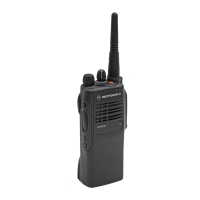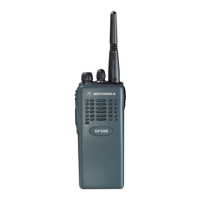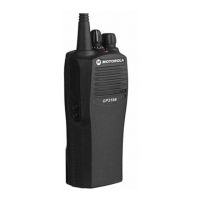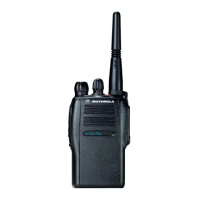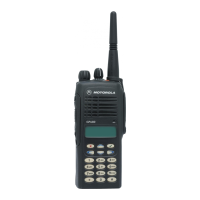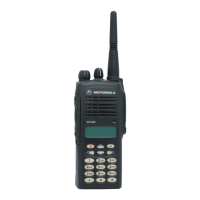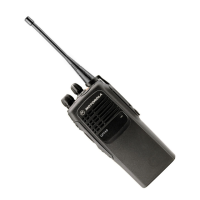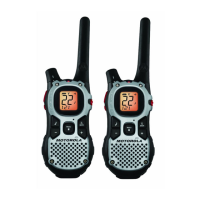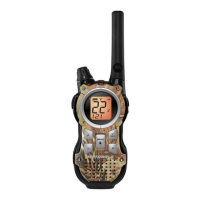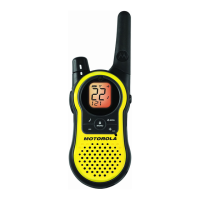Controller Board 4-3
3.2 Digital Architecture
MCU configuration
There is one common MCU architecture for low-tier as well as for the high-tier products. It covers the
Conventional and Trunking portables. An open architecture system with the new HC11FL0 as the
processor is used. Combinations of different size RAM, ROM and EEPROM are available for various
application software.
Real Time Clock (RTC)
This radio supports Real Time Clock (RTC) module for purposes of Message Time Stamping and
Time Keeping. The RTC module resides in the micro-processor HC11FL0. It is kept alive by a back-
up Lithium Ion battery when the primary battery is removed.
Circuit Description
The RTC module which resides in the HC11FL0 is powered by the ModB/Vstby pin and PI6/PI7 form
the crystal oscillator circuit. Clock frequency of 38.4kHz from a crystal oscillator provides the
reference signal. In the processor, the frequency is divided down to 1Hz.
As the RTC module is powered separately from the processor Vdd, the RTC is kept alive through the
ModB / Vstby pin when the radio is switched off. A small button Lithium Ion battery continues to feed
the RTC when the primary battery is removed.
A MOSFET Q416 switches in the Li (Lithium) Ion supply when Vdd is removed. Q416 also provides
isolation from BOOT_CTRL function in the event of radio program flashing. A small 3.3V regulator is
used to charge the Li (Lithium) Ion battery.
Figure 4-3: RTC Circuit
LI_ION
R462
R419
3
4
2
15
CR411
1
2
3
Q416
C434
U410
3.3V
3
2
1
VIN
VOUT
VSS
UNSWB+
R460
C435
R461
Vddd
HC11FL0
MODA
MODB
R420
R426
FL401
C436
C437
PI6
PI7
OUT
IN
GND
38.4kHz
UNSWB+
SWB+
6
4
1
3
2
3
51
2
4
CR413
R463
300
Q417
TEST_POINT
TP405
1
BOOT_CTRL

